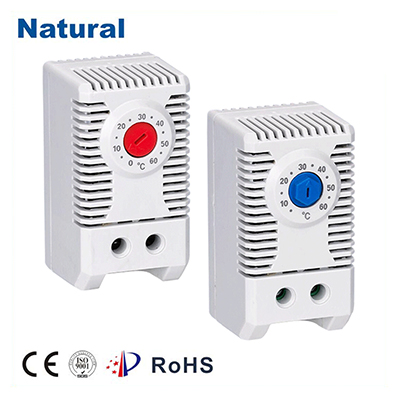Introduction

In today’s world of technological marvels, where everything seems to operate with a touch or a voice command, it’s easy to overlook the humble yet incredibly important bimetal thermostat. These unassuming devices play a critical role in regulating temperature in numerous appliances and systems, from the thermostat in your home’s heating system to controlling the temperature of your morning coffee maker. In this article, we will explore the fascinating world of bimetal thermostats, their working principles, applications, and why they continue to be an essential part of modern engineering. The Basics of Bimetal Thermostats A bimetal thermostat is a temperature-sensitive device composed of two different metals bonded together. These metals have different coefficients of thermal expansion, which means they expand or contract at different rates when subjected to temperature changes. The most common metals used in bimetallic strips are steel and brass. The fundamental concept behind a bimetal thermostat is that when the temperature changes, the metals expand or contract at different rates, causing the strip to bend. This bending motion is harnessed to open or close an electrical circuit, depending on the specific application. Working Principles Expansion and Contraction:When exposed to a rise in temperature, the metal with the higher coefficient of thermal expansion will expand more than the other metal, causing the bimetal strip to bend towards the metal with the lower coefficient. This bending action can be precisely controlled based on the type and thickness of the metals used. Electrical Switching:The bending of the bimetal strip is used to actuate an electrical switch. In heating applications, this can turn a heater off when a certain temperature is reached or turn it on when the temperature falls below a set point. In cooling applications, the process is reversed. Applications of Bimetal Thermostats Household Thermostats:One of the most common applications of bimetal thermostats is in household heating and cooling systems. They enable precise temperature control, ensuring your home stays comfortable year-round while saving energy. Refrigerators:Bimetal thermostats are used in refrigerators to control the temperature inside the appliance. When the temperature rises above a certain point, the thermostat triggers the compressor to start cooling the refrigerator. Coffee Makers:Ever wondered how your coffee maker knows when to stop brewing? Bimetal thermostats are responsible for shutting off the heating element when the water reaches the desired temperature. Water Heaters:Bimetal thermostats play a crucial role in regulating the water temperature in electric water heaters, preventing scalding or water that’s too cold. Automotive Applications:Bimetal thermostats are also used in automobiles to regulate engine temperature. When the engine gets too hot, the thermostat opens, allowing coolant to flow through the radiator and cool the engine. Advantages of Bimetal Thermostats Reliability:Bimetal thermostats are known for their long-term reliability. They can withstand a wide range of temperatures and continue to function accurately. Cost-Effective:These thermostats are cost-effective to manufacture, making them an economical choice for various applications. Simple Design:Their simple design means fewer components to fail, reducing the risk of malfunction. Conclusion In a world filled with cutting-edge technology, the enduring relevance of bimetal thermostats is a testament to their reliability and effectiveness in temperature control. From ensuring your morning coffee is brewed to perfection to maintaining the ideal temperature in your home, bimetal thermostats silently play a vital role in our daily lives. So, the next time you adjust your thermostat or grab a cold drink from the refrigerator, take a moment to appreciate the marvel of precision control that is the bimetal thermostat.